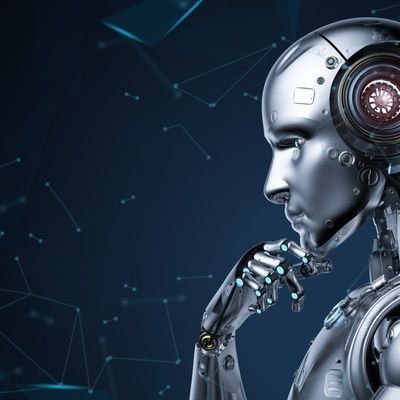
Collaborative Robots (Cobots) in Manufacturing: Revolutionizing the Industry
The manufacturing industry has always been at the forefront of adopting new technologies to improve efficiency, productivity, and safety. One of the most significant advancements in recent years is the introduction of collaborative robots, commonly known as cobots. Unlike traditional industrial robots, which are typically confined to cages and separated from human workers for safety reasons, cobots are designed to work alongside humans in a shared workspace. These robots are transforming the manufacturing landscape by enabling more flexible, efficient, and safe production processes. This article explores the role of cobots in manufacturing, their applications, benefits, challenges, and the future of this rapidly evolving technology.
What Are Collaborative Robots (Cobots)?
Collaborative robots, or cobots, are a type of robot designed to work safely alongside human operators. Unlike traditional industrial robots, which are large, powerful, and often operate in isolation, cobots are typically smaller, more versatile, and equipped with advanced sensors and software that allow them to interact safely with humans.
Cobots are designed to assist with tasks that require precision, strength, or repetitive motion, making them ideal for a wide range of applications in manufacturing. They can be programmed to perform a variety of tasks, from simple pick-and-place operations to complex assembly processes, and can easily be integrated into existing production lines.
Applications of Cobots in Manufacturing
Cobots are being deployed across various manufacturing sectors, offering flexibility and efficiency that traditional robots often cannot match. Here are some of the key applications of cobots in manufacturing:
1. Assembly Line Work
One of the most common applications of cobots in manufacturing is assembly line work. Cobots can assist human workers with tasks such as assembling small components, fastening screws, or placing parts into machines. These tasks often require precision and repetitive motion, making them ideal for cobots.
For example, in the automotive industry, cobots are used to assist with the assembly of car parts, such as installing doors, windshields, or dashboards. The cobot can perform tasks that require precision, while the human worker focuses on more complex tasks that require decision-making or creativity.
2. Material Handling and Packaging
Cobots are also widely used for material handling and packaging tasks. They can pick up, move, and place items with high accuracy, reducing the risk of damage to products and increasing the efficiency of the packaging process.
In the food and beverage industry, for instance, cobots are used to package products, such as placing items into boxes, sealing packages, and stacking them on pallets. Cobots can work continuously without fatigue, leading to higher productivity and consistent output quality.
3. Quality Inspection
Quality control is a critical aspect of manufacturing, and cobots are increasingly being used to assist with quality inspection tasks. Equipped with advanced sensors, cameras, and AI algorithms, cobots can inspect products for defects, measure dimensions, and ensure that items meet the required quality standards.
For example, in the electronics industry, cobots are used to inspect circuit boards for defects, such as soldering errors or missing components. The cobot can quickly and accurately identify defects, allowing for immediate corrective action and reducing the risk of defective products reaching the customer.
4. Machine Tending
Machine tending involves loading and unloading machines, such as CNC machines or injection molding machines, with raw materials or finished products. This task can be repetitive and physically demanding, making it an ideal application for cobots.
Cobots can be programmed to load materials into a machine, monitor the production process, and remove finished products, allowing human operators to focus on more complex tasks. This not only improves efficiency but also reduces the risk of injury associated with repetitive motion and heavy lifting.
5. Welding and Painting
Welding and painting are tasks that require precision, consistency, and safety precautions due to the potential hazards involved. Cobots are increasingly being used to assist with these tasks, ensuring high-quality results while reducing the risk of accidents.
In the automotive and aerospace industries, cobots are used for spot welding, arc welding, and painting tasks. The cobot can maintain a consistent welding or painting speed and angle, resulting in a uniform finish and reducing the likelihood of defects.
6. Customization and Small Batch Production
In industries where customization and small batch production are common, cobots offer the flexibility needed to adapt to changing production requirements. Cobots can be easily reprogrammed and redeployed to perform different tasks, making them ideal for manufacturers that need to produce a variety of products in small quantities.
For example, in the consumer electronics industry, cobots can be used to assemble custom configurations of products, such as smartphones or laptops, according to customer specifications. This flexibility allows manufacturers to respond quickly to market demands and offer personalized products without significant downtime.
Benefits of Cobots in Manufacturing
The adoption of cobots in manufacturing offers numerous benefits, making them an increasingly popular choice for manufacturers looking to improve their operations. Here are some of the key benefits:
1. Increased Efficiency and Productivity
Cobots can work continuously without breaks, leading to higher productivity and faster production cycles. By automating repetitive tasks, cobots free up human workers to focus on more complex and value-added activities, resulting in overall efficiency gains.
2. Improved Quality and Consistency
Cobots are highly precise and consistent in their operations, reducing the likelihood of errors and defects. This consistency leads to higher-quality products and reduces the need for rework, saving time and resources.
3. Enhanced Flexibility
Cobots are designed to be versatile and easily reprogrammable, allowing manufacturers to quickly adapt to changing production needs. This flexibility is particularly valuable in industries where product designs and customer demands frequently change.
4. Safety and Ergonomics
Cobots are equipped with advanced safety features, such as force sensors and collision detection, that allow them to work safely alongside human operators. This reduces the risk of workplace injuries and improves overall workplace ergonomics by taking on physically demanding tasks.
5. Cost-Effective Automation
Compared to traditional industrial robots, cobots are generally more affordable and easier to implement. They require less infrastructure, such as safety cages, and can be integrated into existing production lines with minimal disruption. This makes cobots a cost-effective solution for manufacturers of all sizes.
6. Workforce Collaboration
Cobots are designed to complement human workers rather than replace them. By working alongside humans, cobots can enhance the capabilities of the workforce, leading to improved collaboration and job satisfaction. Workers can focus on tasks that require creativity, problem-solving, and human judgment, while cobots handle repetitive or physically demanding tasks.
Challenges of Implementing Cobots in Manufacturing
While cobots offer many benefits, there are also challenges that manufacturers must address to ensure successful implementation:
1. Integration with Existing Systems
Integrating cobots into existing production lines and systems can be challenging, particularly in older facilities with legacy equipment. Manufacturers need to ensure that cobots can communicate effectively with other machines and systems, which may require additional investment in software and hardware.
2. Training and Workforce Adaptation
Successful deployment of cobots requires proper training for human operators. Workers need to understand how to operate, program, and maintain cobots, which may involve a learning curve. Additionally, there may be resistance to adopting new technology, especially if workers fear job displacement.
3. Initial Investment and ROI
Although cobots are generally more affordable than traditional industrial robots, the initial investment can still be significant. Manufacturers need to carefully evaluate the potential return on investment (ROI) and ensure that the benefits of cobots justify the costs.
4. Technical Limitations
Cobots are designed for specific tasks and may not be suitable for all applications. For example, they may have limitations in terms of speed, payload capacity, or precision compared to traditional industrial robots. Manufacturers need to assess whether cobots are the right solution for their specific needs.
5. Safety Concerns
While cobots are equipped with safety features, there is still a need to ensure that they operate safely in all scenarios. Manufacturers must conduct thorough risk assessments and implement safety protocols to prevent accidents or malfunctions.
The Future of Cobots in Manufacturing
The future of cobots in manufacturing looks promising, with ongoing advancements likely to further enhance their capabilities and expand their applications. Several trends and developments will shape the future of cobots in manufacturing:
1. Integration with AI and Machine Learning
The integration of artificial intelligence (AI) and machine learning with cobots will enable them to perform more complex tasks and adapt to changing production requirements. AI-powered cobots will be able to learn from their environment, optimize their performance, and collaborate more effectively with human workers.
2. Enhanced Mobility and Dexterity
Future cobots are expected to have improved mobility and dexterity, allowing them to perform tasks that require more complex movements and interactions. This will enable cobots to take on a wider range of tasks, including those that require fine motor skills or operation in confined spaces.
3. Increased Adoption in Small and Medium-Sized Enterprises (SMEs)
As cobot technology becomes more affordable and accessible, small and medium-sized enterprises (SMEs) are likely to adopt cobots at a higher rate. This will allow SMEs to benefit from automation and compete more effectively with larger manufacturers.
4. Expansion into New Industries
While cobots are already widely used in manufacturing, their applications are likely to expand into new industries, such as healthcare, agriculture, and logistics. Cobots could assist with tasks such as patient care, harvesting crops, or sorting packages, further demonstrating their versatility.
5. Improved Human-Robot Collaboration
The future of cobots will involve even closer collaboration between humans and robots, with cobots becoming more intuitive and responsive to human needs. Advances in human-robot interaction, such as natural language processing and gesture recognition, will make it easier for workers to interact with and control cobots.
Conclusion
Collaborative robots, or cobots, represent a transformative technology that is revolutionizing the manufacturing industry. Their ability to work safely alongside human operators, coupled with their flexibility, precision, and ease of use, makes them a valuable asset in modern production environments. As manufacturers continue to seek ways to improve efficiency, reduce costs, and enhance product quality, the adoption of cobots is likely to increase.
The benefits of cobots are clear: they boost productivity by automating repetitive and physically demanding tasks, enhance safety by reducing the risk of workplace injuries, and offer the flexibility needed to adapt to changing production needs. Additionally, cobots can be easily integrated into existing manufacturing processes, making them a cost-effective solution for companies of all sizes.
However, the implementation of cobots does come with challenges. Manufacturers must carefully consider the initial investment, ensure proper integration with existing systems, and provide adequate training for their workforce. Addressing these challenges will be critical to maximizing the potential of cobots in manufacturing.
Looking ahead, the future of cobots in manufacturing is bright. With ongoing advancements in artificial intelligence, machine learning, and human-robot interaction, cobots are set to become even more capable and versatile. As they continue to evolve, cobots will play an increasingly important role not only in manufacturing but also in other industries such as healthcare, agriculture, and logistics.
In conclusion, collaborative robots are not just a trend but a fundamental shift in how manufacturing is conducted. They represent the next step in the evolution of automation, bringing together the strengths of both human workers and robotic technology to create more efficient, safe, and productive manufacturing environments. As technology continues to advance, cobots will undoubtedly become an integral part of the future of manufacturing, driving innovation and growth across industries.
ALSO READ: Phishing Attacks | Prevention and Response









